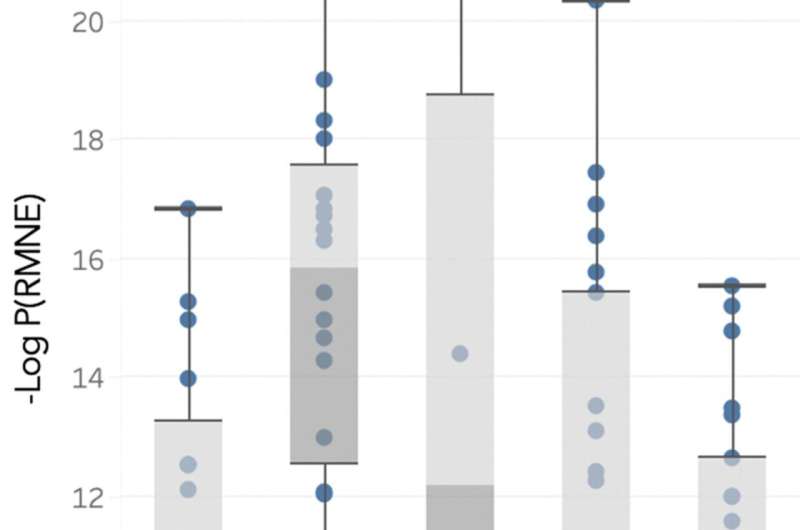This article has been reviewed according to Science X's editorial process and policies. Editors have highlighted the following attributes while ensuring the content's credibility:
fact-checked
trusted source
proofread
Can investigators use household dust as a forensic tool?

A North Carolina State University-led study has found it is possible to retrieve forensically relevant information from human DNA in household dust. After sampling indoor dust from 13 households, the researchers were able to detect DNA from household residents over 90% of the time, and DNA from non-occupants 50% of the time. The work could be a way to help investigators find leads in difficult cases.
The work appears in the Journal of Forensic Sciences.
Specifically, the researchers were able to obtain single nucleotide polymorphisms, or SNPs, from the dust samples. SNPs are sites within the genome that vary between individuals— corresponding to characteristics like eye color—that can give investigators a "snapshot" of the person.
"SNPs are just single sites in the genome that can provide forensically useful information on identity, ancestry and physical characteristics—it's the same information used by places like Ancestry.com—that can be done with tests that are widely available," says Kelly Meiklejohn, assistant professor of forensic science and coordinator of the forensic sciences cluster at NC State. Meiklejohn is corresponding author of the study.
"Because they're single sites, they're easier to recover for highly degraded samples where we may only be able to amplify short regions of the DNA," Meiklejohn says. "Traditional DNA analysis in forensics amplifies regions ranging from 100 to 500 base pairs, so for a highly degraded sample the large regions often drop out. SNPs as a whole don't provide the same level of discrimination as traditional forensic DNA testing, but they could be a starting place in cases without leads."
Meiklejohn and her team recruited 13 diverse households and took cheek swabs from each occupant along with dust samples from five areas within each home: the top of the refrigerator; inside the bedroom closet; the top frame of the front door; a bookshelf or photo frame in the living room; and a windowsill in the living room.
Utilizing massively parallel sequencing, or MPS, the team was able to quickly sequence multiple samples and target the SNPs of interest. They found that 93% of known household occupants were detected in at least one dust sample from each household. They also saw DNA from non-occupants in over half of the samples collected from each site.
"This data wouldn't be used like traditional forensic DNA evidence—to link a single individual to a crime—but it could be useful for establishing clues about the ancestry and physical characteristics of individuals at a scene and possibly give investigators leads in cases where there may not be much to go on," Meiklejohn says. "But while we know it is possible to detect occupants versus non-occupants, we don't know how long an individual has to stay in a household before they leave DNA traces in household dust."
The researchers plan to address the question of how much time it takes for non-occupants to be detected in dust in future studies. Meiklejohn sees the work as being useful in numerous potential investigative scenarios.
"When perpetrators clean crime scenes, dust isn't something they usually think of," Meiklejohn says. "This study is our first step into this realm. We could see this being applied to scenarios such as trying to confirm individuals who might have been in a space but left no trace blood, saliva or hair. Also for cases with no leads, no hit on the national DNA database, could household dust provide leads?"
NC State Senior Vice Provost for University Interdisciplinary Programs Rob Dunn, NC State research associates Melissa Scheible and Laura Boggs, and Darrell Ricke of the Massachusetts Institute of Technology's Lincoln Labs also contributed to the work.
More information: Kelly A. Meiklejohn et al, Using FastID to analyze complex SNP mixtures from indoor dust, Journal of Forensic Sciences (2023). DOI: 10.1111/1556-4029.15246
Provided by North Carolina State University





















